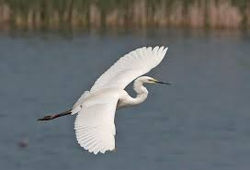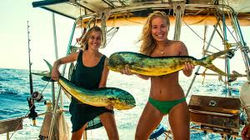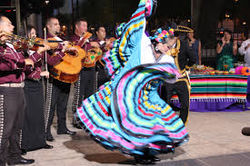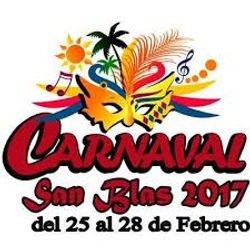

ISLAND RESORT
Historic Spanish Port of San Blas
San Blas was founded in 1531 by Spanish explorers and is one of Mexico’s oldest and most historic coastal ports and towns.
Spanish Franciscan priest Fra. Junipero Serra served as the priest for the San Blas Catholic church, where he planned his historic mission-planting journey north into California. As the Father-President of the undertaking, he oversaw construction of nine of the twenty-two historic California missions. Fra. Serra actually launched his epic journey from Las Islitas beach in May of 1768.
A plaque on the wall of the old church on the town plaza commemorates one of the world's most venerated poets, Henry Wadsworth Longfellow, who lived in San Blas for many years, and found here the inspiration for his famous poem, The Bells of San Blas.
San Blas is also noted as the birthplace of two of Mexico’s oldest indigenous Indian tribes, the Cora Indians and the Huichol (pronounced “wee-chole”), who are direct decendants of the Aztecs. One of the most popular hot sauces in Mexico, Salsa Huichol, is made from an ancestral recipe of the San Blas Huichol Indians. The Huichol are perhaps most famous for their intricate and brightly-colored beadwork art, featured and sold in art galleries all over the world. The LAS ISLITAS ISLAND RESORT will feature a native cultural center where native arts, crafts, folklorico dances, and other customs will be presented.



Attractions & Activities




The Contaduria (Old Spanish Fort Ruins)
Beginning in the 16th century, Spain established the Pacific Fleet of the mighty Spanish Armada and chose San Blas as its North American headquarters. It built a port, a customs/counting house in the port, and a large fort and church on the volcanic hill above the town with sweeping views of the city, the port, and Pacific Ocean. The Spanish Armada patrolled the Pacific, intercepting pirate ships that had attacked merchant ships--oftentimes killing their crew--and had stolen their cargoes. The customs/counting house is where the recovered treasures and other colonial riches were inventoried and stored for a period of time to allow claims and recovery by the owners. Any items not claimed during that period were shipped back to the King of Spain.
Today, the fort is a very popular tourist attraction, and houses a museum and a small cafe on a patio overlooking the town and the ocean.
Both the fort and the old church also serve as a popular location for events including weddings, concerts, and even the nationally televised Miss Mexico beauty pageants.








LA TOVARA NATIONAL PARK, NATURE PRESERVE, BIRD WATCHING & JUNGLE TOUR
Across the Tovara River, which forms the north border of the LAS ISLITAS ISLAND RESORT, lies the 6,000-acre LA TOVARA NATIONAL PARK & NATURE PRESERVE. It's Zoquipan Estuary is an important nesting ground for over 300 species of rare and exotic birds, and is recognized by the International Auduban Society as a recommended destination for its global annual Bird Count, which last year attracted 22,000 international participants. The Tovara River is also the site of the enormously popular Tovara Jungle Tour, which winds through exotic mangrove tunnels and rain forest up to a pristine, black lava rock lagoon fed by cool artisian well waters.

 |  |  |  |  |
|---|---|---|---|---|
 |  |  |  |  |
 |  |  |  |
MATANCHEN BAY & WORLD FAMOUS GUINNESS RECORD
MILE-LONG SURF WAVE

Matanchen Bay (máh-ten-chen) is well known among surfers worldwide for its perfectly-shaped, uncrowded, mile-long waves; noted in the Guinness World Records Book for the longest wave ride in the world. The bay enjoys a very unique configuration of a flat, sandy bottom which declines very gradually away from the shore; such that the water depth may be just 3 feet as far as 50 yards from the shore. So rather than bending and breaking parallel to the shore, this bottom profile causes the incoming right-breaking waves to move perpendicular to the shore and thus travel across the bay--a distance of one mile.
Even more amazing is that the flat and gradual bottom causes the face of the wave to extend far out into the bay--as much as 50 yards--with perfect, rideable shape; allowing surfers to either aggressively "shred" the wave, or just "park" on the nose of their boards and travel far out into the bay, then turn back and ride the same wave left to the area along the shore where it is breaking.
Another feature is that, as the waves travel, they gradually decrease in height and speed, making this surfer's paradise both very safe and very ideal for both beginners--who practice at the back of the bay--as well as experts, who stay further out toward the ocean. and everyone in between. As you improve, simply walk along the shore, and pick a spot where the wave height and speed matches your ability.



 |  |  |  |  |
|---|---|---|---|---|
 |  |  |  |
THE SAN BLAS PORT & MARINA:
DEEP SEA FISHING, WHALE WATCHING, SNORKELING & OTHER WATER SPORTS
As noted earlier, San Blas is one of Mexico's oldest seaports. The port grew to include a Naval/Military base; enhancing the area's security. In 2016, as part of the RIVIERA NAYARIT tourism initiative, the Mexican government's tourism development agency, FONATUR, completed a state-of-the-art marina and port operations center, featuring full marine services including a fuel dock, 40-ton hoist, mechanic services, dry dock, marine supply store, air-conditioned lounge, and restaurant. In 2021, the WTO & UNESCO awarded Marina San Blas its prestigious & globally-recognized Blue Flag Certification for environmental excellence.
The marina is also home to the San Blas Yacht Club and Sportfishing Club, where visitors can hire fully-outfitted fishing boats and local captains who know where to find the best and biggest game fish including Sailfish, Marlin, Dorado (Mahi-Mahi), Yellowtail, Seabass, and many more. The LAS ISLITAS Project Management also co-sponsors the annual San Blas sportfishing tournament held each June.
Visitors can also take whale-watching excursions, as well as enjoy surfing, snorkeling, parasailing, windsurfing, and also rent surfboards, wave-runners, jet skis, , and other watercraft.





 |  |  |  |  |
|---|---|---|---|---|
 |  |  |  |  |
 |
HIKING & ECO-TOURISM,
CULTURAL & VOLUNTOURISM ADVENTURES
San Blas is an eco- and volun-tourism paradise, with many exciting and fulfilling activities to explore including hiking jungle trails to stunning waterfalls and secluded pools, orienteering, nature photography, zipline, birdwatching, and archaeological expeditions to nearby ancient pyramids. In addition, you can immerse yourself in the local culture, volunteering at archaelogical "tell" excavation sites, attending and even participating in local cultural exhibitions, concerts, colorful firework displays, and wildly entertaining festivals such as the annual San Blas Carnaval, participating in native indian customs and rituals, and also volunteering for many local community service opportunities.








 |  |  |  |  |
|---|---|---|---|---|
 |  |  |  |  |